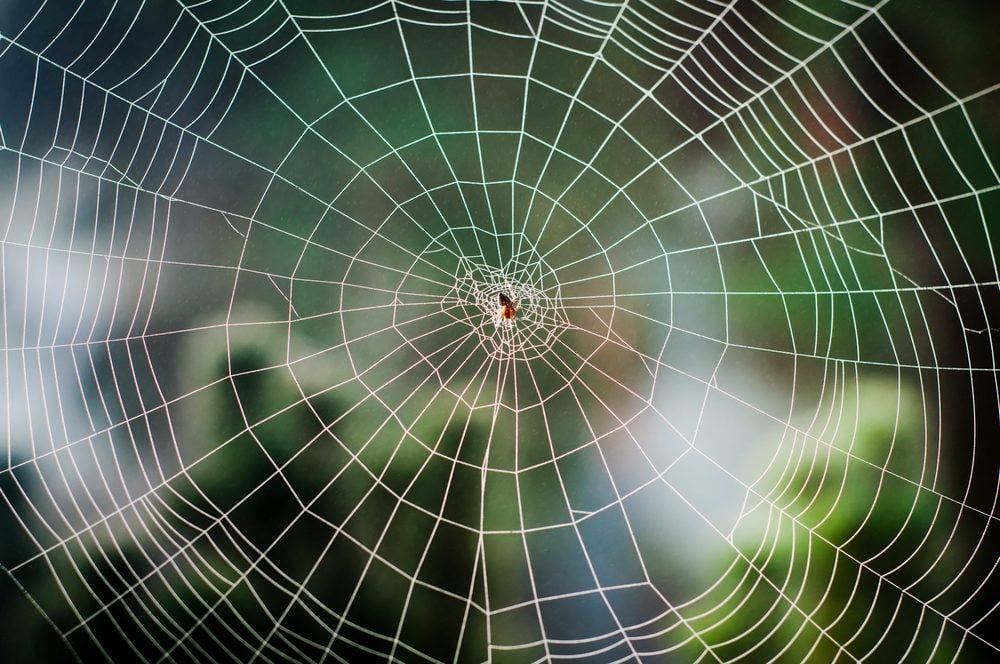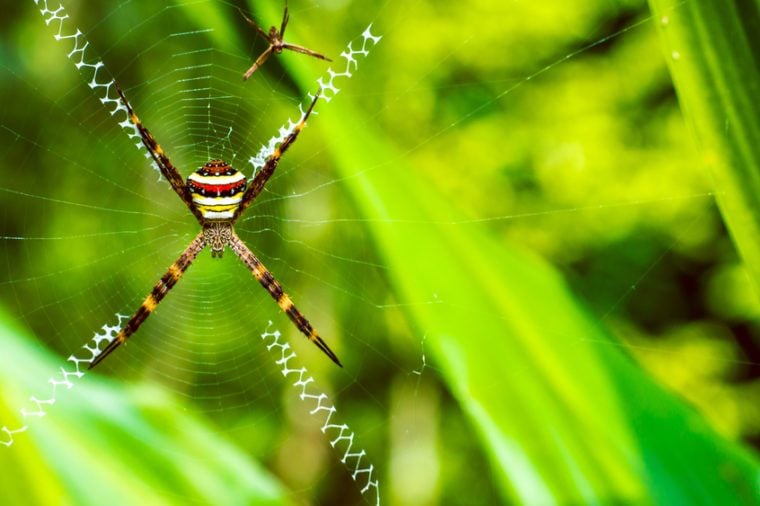

Arachnid architecture
 Eugene Kalenkovich/Shutterstock
Eugene Kalenkovich/Shutterstock
On most orb webs, the threads that serve as spokes are stiffer and aren't sticky. Once the structural supports are in place, the spider starts on the outside and spirals inward, attaching each segment of silk and coating the strands with a sticky substance. Once an unlucky bug gets stuck, killed, and wrapped, this design generally maintains its strength, so the spider can make minor repairs rather than having to rebuild from scratch. This is important because web-building uses a huge amount of energy for the spider. (Sometimes they eat the webs they're done with, in fact.) Don't miss these exceptionally rare National Geographic photos you won't be able to get out of your head.
Web decoration
 Igor Tichonow/Shutterstock
Igor Tichonow/Shutterstock
This St. Andrew's cross spider has gone the extra mile to weave a special pattern, called a stabilimenta, into its web. Researchers aren't sure why some orb-weaving spiders do this—it could be to camouflage themselves or to look bigger to predators, or to make their webs more visible to creatures (like humans or other animals) that might otherwise accidentally crash through their webs. Scientists also theorize that the decorations reflect ultraviolet light in a way that attracts prey, or they might just help spiders maintain optimal body temperatures. Here's how to keep these creepy-crawlers and other insects out of your home.
Silk art
 Jamikorn Sooktaramorn/Shutterstock
Jamikorn Sooktaramorn/Shutterstock
Spider researchers (arachnologists) originally thought that stabilimenta added stability to webs, which is how the decorations got their name. But that theory has lost favor in recent years. Spiders might just have extra silk to use up, or maybe it's just a female spider's way of attracting a mate. Most male spiders never build webs, but they can spin silk—some use it to wrap up dead bugs as gifts that they offer to females in order to keep from being eaten before they can mate. Next, check out these other bizarre bug facts that will totally freak you out.
14 of the Most Elaborate Spider Webs Ever Found in Nature, Source:https://www.rd.com/culture/elaborate-spider-webs/